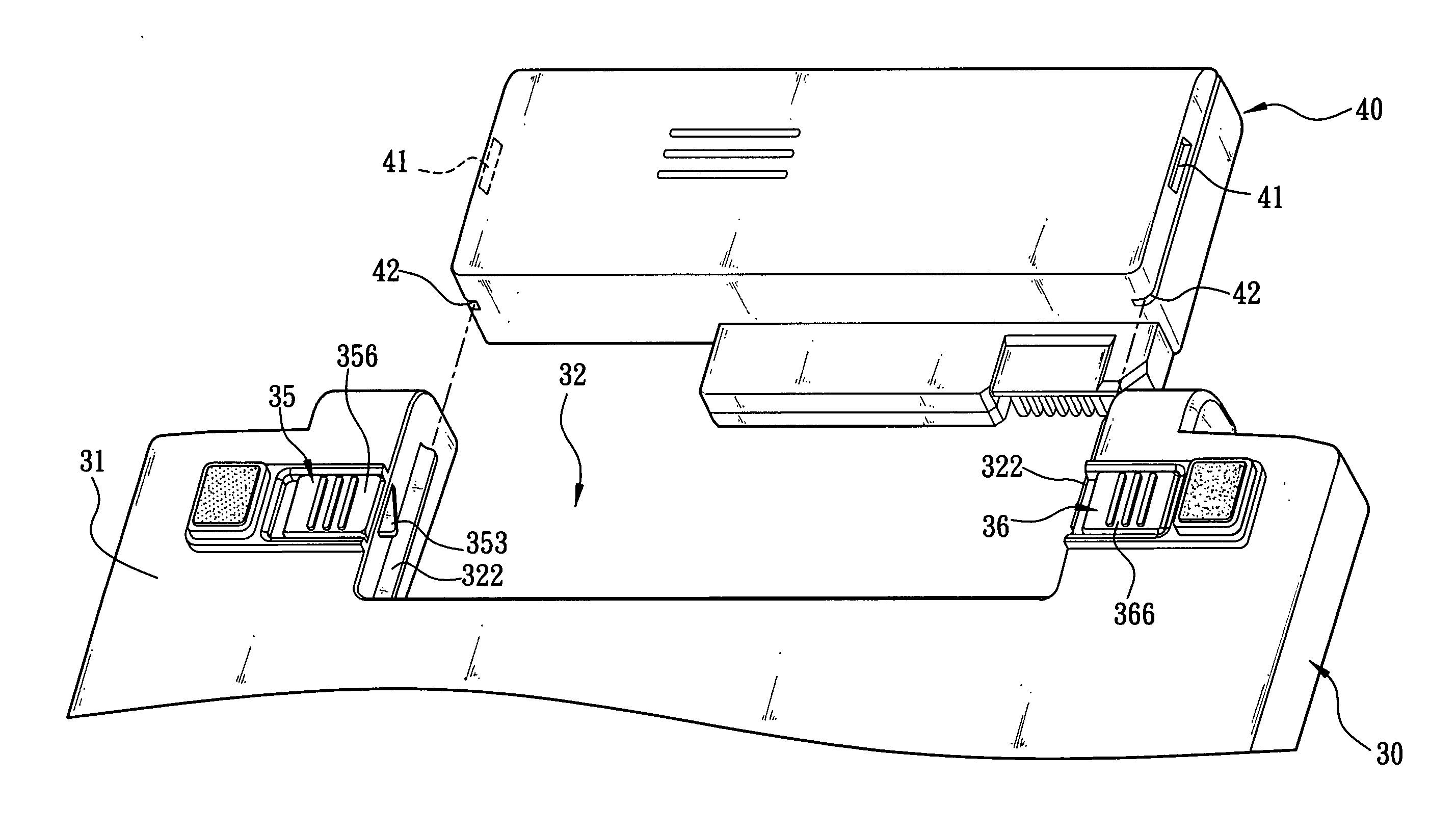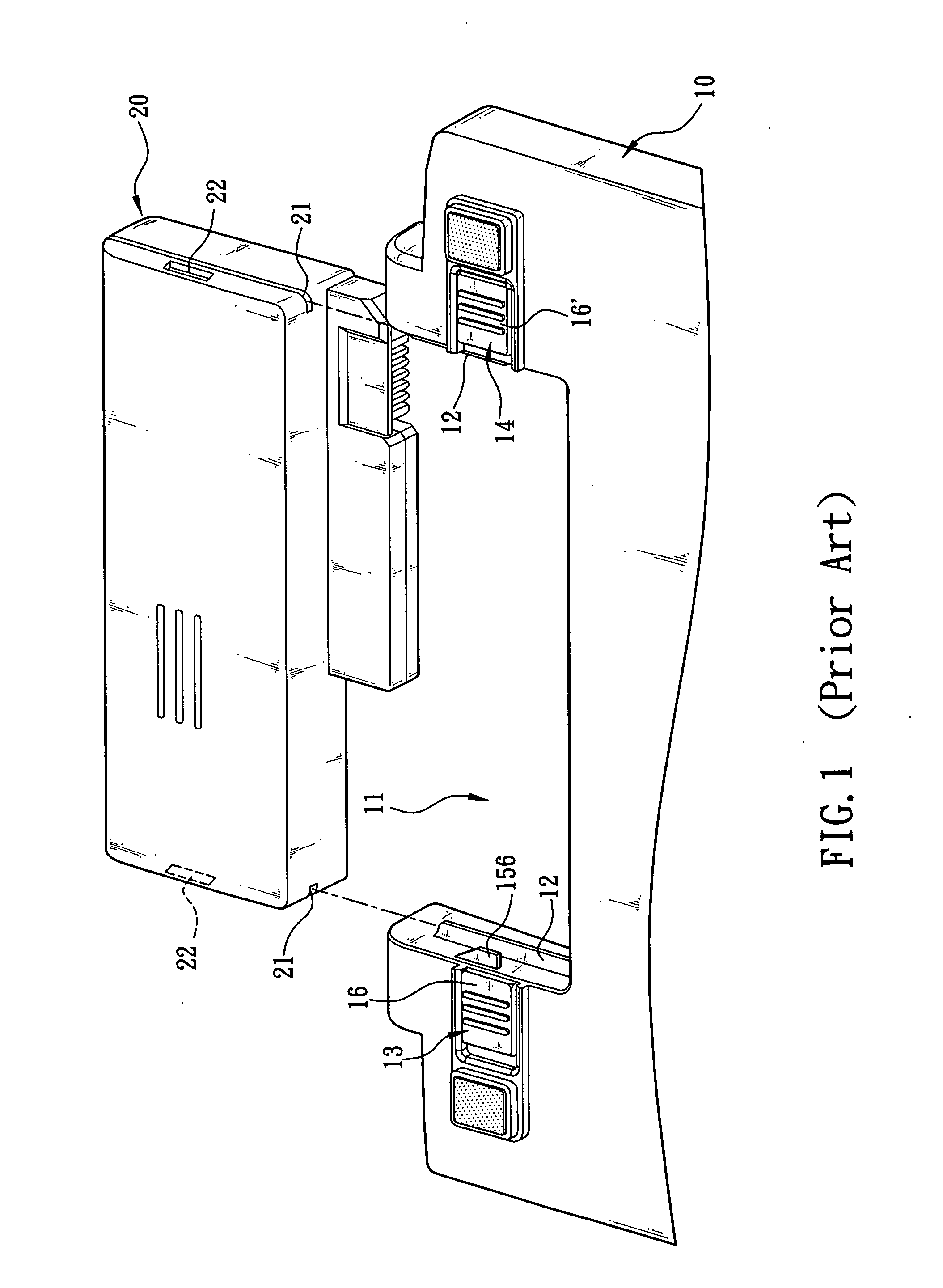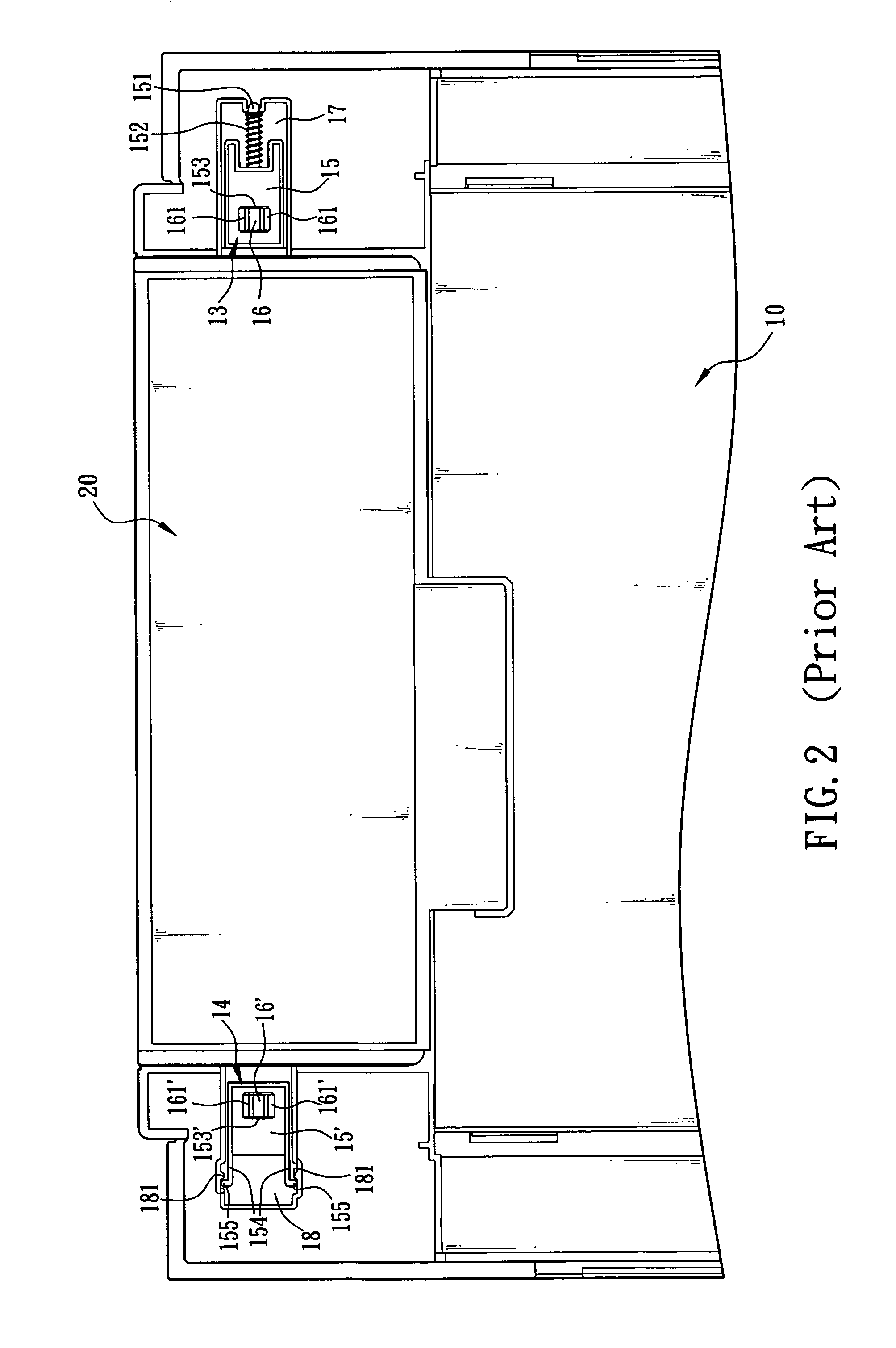Module assembly for locking and unlocking a battery of an electronic device
a technology of electronic devices and modules, applied in the direction of portable computer details, electric apparatus casings/cabinets/drawers, instruments, etc., can solve the problems of inability to upgrade, inability to meet the needs of users, so as to reduce the quantity of molds, reduce the effect of manufacturing cost and simplify the process of material planning, material management and inventory
- Summary
- Abstract
- Description
- Claims
- Application Information
AI Technical Summary
Benefits of technology
Problems solved by technology
Method used
Image
Examples
Embodiment Construction
[0020] Referring to FIGS. 3 and 4 for the module assembly for locking and unlocking a battery of an electronic device according to a preferred embodiment of the present invention, an electronic device such as a notebook computer is used for illustration. The notebook computer 30 comprises a lower chassis 31, a narrow long receiving groove 32 disposed on one side of the lower chassis 31, and a first limit section 33 and a second limit section 34 separately disposed inside the lower chassis 31 and proximate to both sidewalls of the receiving groove 32 as shown in FIG. 3; wherein the first limit section 33 includes an automatic latch button 35, and the automatic latch button 35 comprises a latch 351 and a button body 356, and the latch 351 includes an embedding hole 352 thereon, and one end of the latch 351 includes an inclined lock tongue 353 exposed from an end of the receiving groove 32 and a rod body 354 extended horizontally from another end of the latch 351. The rod body 354 incl...
PUM
 Login to View More
Login to View More Abstract
Description
Claims
Application Information
 Login to View More
Login to View More - R&D
- Intellectual Property
- Life Sciences
- Materials
- Tech Scout
- Unparalleled Data Quality
- Higher Quality Content
- 60% Fewer Hallucinations
Browse by: Latest US Patents, China's latest patents, Technical Efficacy Thesaurus, Application Domain, Technology Topic, Popular Technical Reports.
© 2025 PatSnap. All rights reserved.Legal|Privacy policy|Modern Slavery Act Transparency Statement|Sitemap|About US| Contact US: help@patsnap.com



